Food additives are substances added to food during production to improve its taste, texture, appearance, or shelf life. These substances can include preservatives, flavor enhancers, colorants, and stabilizers, and they play a crucial role in modern food processing and preservation techniques.
Sodium benzoate is a white, crystalline powder commonly used as a preservative in the food and beverage industry. Granules are a solid form of the chemical compound sodium benzoate, they consist of small, easily dispersible particles of sodium benzoate. With strong antimicrobial properties, it helps prevent the growth of bacteria, yeast, and mold, extending the shelf life of products like soft drinks, condiments, and jams. It is virtually odorless and tasteless and is a cost-effective choice for maintaining product freshness and safety. Sodium benzoate is widely regulated for safe consumption and is a vital ingredient in preserving the quality of various consumer goods.
Sorbic acid is a naturally occurring organic compound that serves as a highly effective preservative in the food, beverage, and cosmetic industries. Sorbic acid is primarily used to extend the shelf life of products by preventing spoilage, ensuring they remain safe and fresh. It is commonly found in items like cheeses, baked goods, wine, and personal care products. Sorbic acid helps maintain the quality of a wide range of goods while complying with relevant safety regulations.
Potassium sorbate is a widely used food additive. It is a salt of sorbic acid and is typically found as granules or powder. This white, odorless, and tasteless compound effectively inhibits the growth of bacteria, yeast, and molds, thus extending the shelf life of various food and beverage products. It’s often utilized in processed foods, dairy products, baked goods, and beverages to prevent spoilage and maintain product freshness. Potassium sorbate is considered safe for consumption when used in recommended quantities and is an essential tool in food preservation, ensuring that products remain safe and palatable for consumers.
Citric acid, available in both anhydrous (without water) and monohydrate (with one water molecule) forms, is a versatile organic acid commonly used in various industries. It is commonly available as a white, crystalline powder and is widely used as an acidulant, flavor enhancer, and preservative in the food and beverage industry. Citric acid also serves as a pH regulator and preservative, extending the shelf life of many food items by preventing spoilage. Its versatility and safe consumption make it a fundamental ingredient in food processing and production.
Sodium citrate is a salt of citric acid, commonly found in the form of white, crystalline granules or powder. It has a variety of applications in the food and beverage industry. Sodium citrate is known for its versatile roles, including:
Emulsifier: It acts as an emulsifying agent, helping to blend ingredients that wouldn’t normally mix well, such as oil and water. This property is particularly useful in processed cheese and ice cream production.
Acid Regulator: Sodium citrate serves as a pH regulator, maintaining the acidity of certain foods and beverages at desired levels. It can enhance the flavor and shelf life of these products.
Buffering Agent: It helps stabilize the pH of products, preventing them from becoming too acidic or too alkaline.
Preservative: Sodium citrate can function as a preservative, extending the shelf life of foods and drinks by preventing spoilage.
Sodium citrate plays a crucial role in ensuring the quality, texture, and shelf stability of various food products, making it a valuable ingredient in the food industry. It is often used in items like processed cheese, soft drinks, and even as an electrolyte replacement in medical solutions. Its versatility and safety for consumption contribute to its widespread use in food manufacturing and processing.
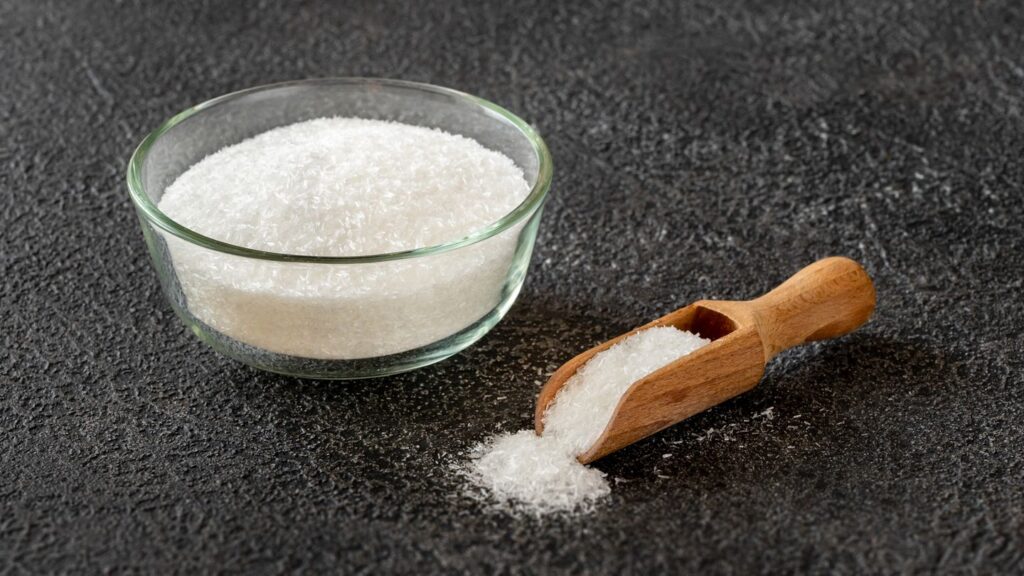
Monosodium glutamate (MSG) is a common flavor enhancer used in food industry. As the sodium salt of glutamic acid, MSG has a savory umami taste that enhances other flavors in a dish without adding its own taste. Even in small amounts, MSG makes foods taste richer by accentuating natural beauty and savory flavors. It comes as a white powder soluble in water or liquids. MSG boosts the taste of foods while reducing sodium and fat compared to salting or butter. As a stable, non-toxic additive, MSG has been used for over a century to add deliciousness to meals.
Guar gum is a thickening agent extracted from guar beans. As a vegetable gum, it absorbs water and swells to form a viscous gel. This property makes guar gum useful as a texture modifier in foods.
It is commonly used in products like ice cream, sauces and baked goods to enhance consistency without significantly altering flavor. Guar gum requires less volume than other thickeners to achieve thickness.
Available as a powder that readily dissolves, guar gum stabilizes emulsions and helps improve food texture, suspension and control crystallization. It performs well over a wide temperature and pH range. Guar gum is considered a versatile and safe thickener for various processed food applications.
Gelatin is a protein derived from animal bones and skin. When dissolved in hot water, it forms a jelly upon cooling due to its gelling properties.
Used widely in foods, gelatin enhances texture without flavor, forming elastic gels that are brittle cold but soft at room temperature. It provides body to desserts, yogurt, candies and more.
As a tasteless and odorless ingredient, gelatin readily dissolves in hot liquids to form a networked gel structure upon cooling that traps air and water. This makes it valuable for stabilizing emulsions and suspensions.
Gelatin is a versatile and economical ingredient for modifying texture in foods and other products without compromising quality or safety.
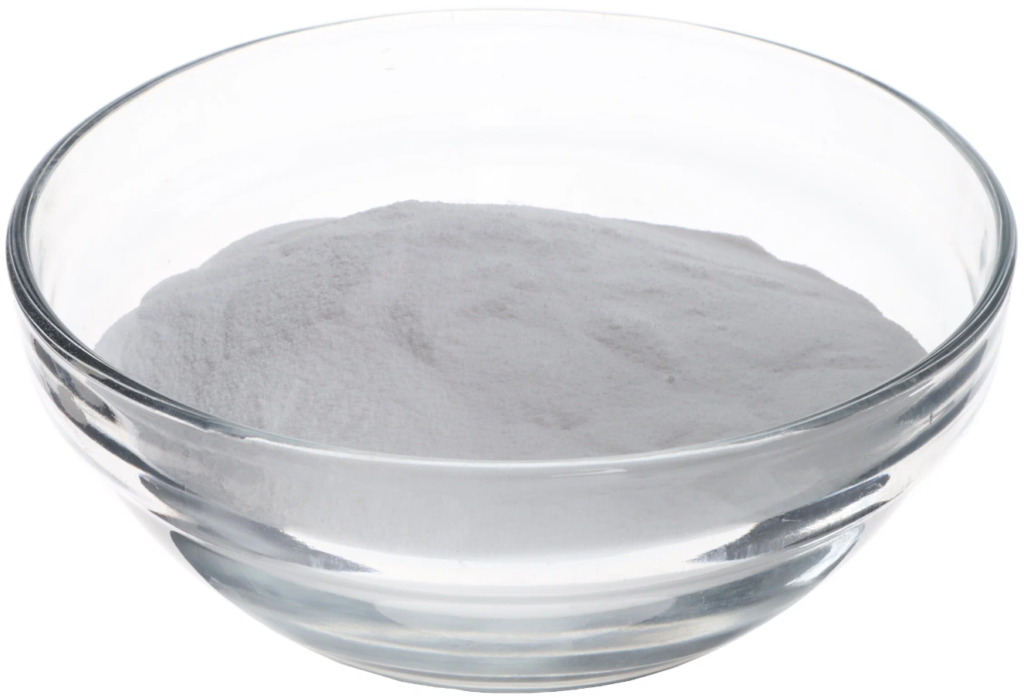
In food production, melting salt refer to specific chemical compounds that assist in the uniform distribution and dissolution of salt in various food products. These substances play a crucial role in ensuring that saltis evenly dispersed throughout the food, enhancing flavor consistency. Melting salt are an artificial product that gives buoyancy to various grades of salt. Ordinary salt contains small crystals that, when interacting with a liquid, do not completely dissolve and remain at the bottom. To avoid this effect, in the process of salt production, a melting salt is added – a synthetic additive that accelerates the process of dissolving salt crystals. Melting salt are mainly used in the production of processed cheeses
Cocoa products encompass a range of food items derived from cacao beans. This category includes cocoa powder, cocoa butter, cocoa mass, all of which are created through processing and refining cacao beans. Cocoa products are widely used in baking, confectionery and beverages etc.
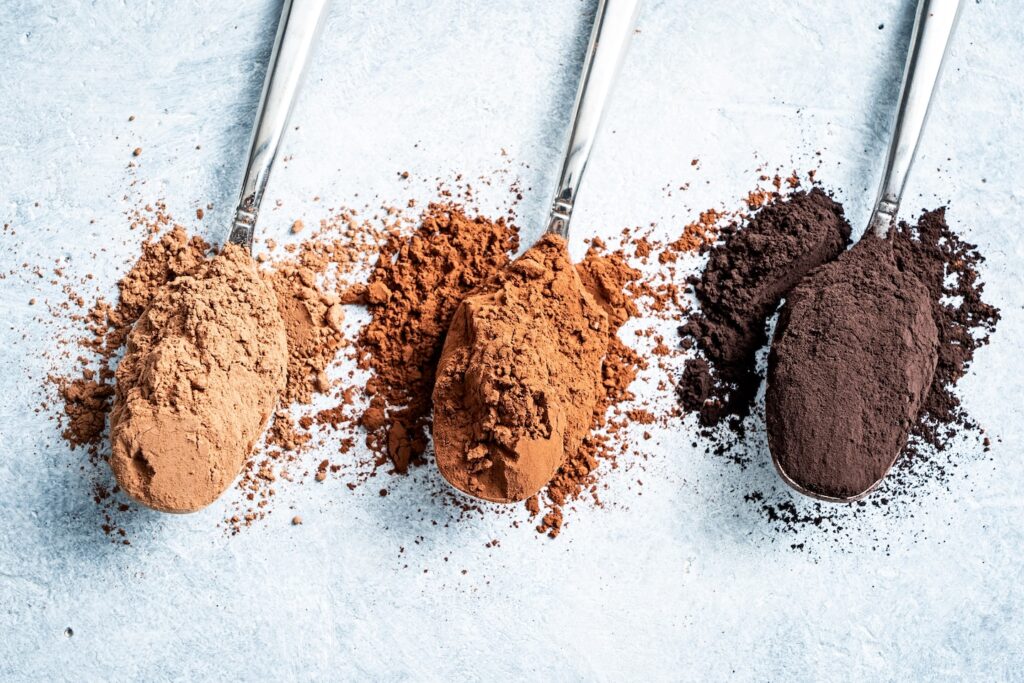
Cocoa powder is finely ground cacao beans that have been roasted, pressed, and hulled. There are two main types:
Natural cocoa powder retains more of the original flavonoids, antioxidants, and cocoa butter from the roasted cacao bean. It has a richer, deeper chocolate flavor but is slightly bitter.
Alkalized (Dutch-process) cocoa powder has undergone an alkalization process where cocoa liquor is treated with potassium carbonate. This neutralizes acids and yields a darker brown powder with a mellower, less bitter taste. The process creates a slightly different chemical makeup than natural cocoa.
Both cocoa powders are used to add chocolate flavor to foods and beverages without adding fat. As an anti-caking agent, it remains flowable and easy to blend.
Common applications include chocolate syrups, baking (cakes, brownies), hot chocolate mixes, confections, and desserts. Due to its intense chocolate taste, a small amount of cocoa powder goes a long way.
Whether natural or alkalized, cocoa powder lends rich cocoa flavor without the need for extra fat, sugar, or calories compared to chocolate.
Cocoa mass is the processed paste made from roasted and ground cocoa beans. It is produced after the cocoa beans are harvested, fermented, dried, cleaned and roasted.
The roasted cocoa beans are cracked and the nibs are winnowed out. These nibs are then ground into a thick, brown liquid or semi-solid paste known as cocoa mass or chocolate liquor.
Cocoa mass retains nearly all of the flavor characteristics and components that were naturally present in the cocoa bean. It contains roughly 55% cocoa butter, which gives it a smooth texture similar to Nutella.
Cocoa mass has an intense chocolate flavor and aroma without any added sugar. It can be further processed into cocoa powder by removing most of the cocoa butter. Or it may be blended with sugar, flavorings and emulsifiers to produce chocolate.
As an intermediate product higher in cocoa butter compared to cocoa powder, cocoa mass provides rich chocolate taste to products like spreads, baking, confectionery and desserts. It helps boost cocoa flavor content without using large quantities.
Cocoa mass extracts maximum chocolate flavor from cocoa beans prior to further processing into other cocoa ingredient forms.
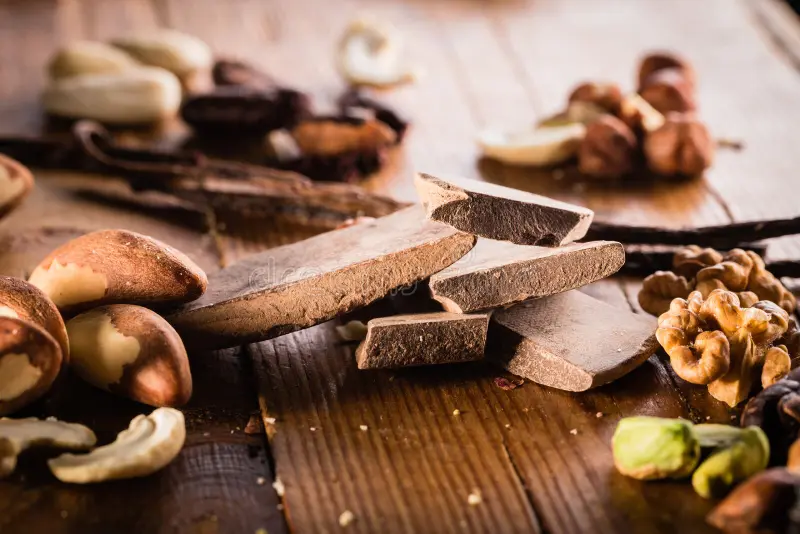

Cocoa butter is the pale yellow, pure fat extracted from the cocoa bean. As a triglyceride composed mainly of oleic acid and saturated fats, cocoa butter has a low melting point of around 34-38°C. This property allows it to transition easily between solid and liquid states.In chocolate manufacturing, cocoa butter provides flavor as well as desired mouthfeel and “snap”. It carries chocolate aromas and contributes to melt-in-your-mouth sensation. Besides chocolate, cocoa butter finds uses in skin care for its moisturizing qualities. It helps form creams and lotions that sink into skin smoothly.
Cocoa butter can be used in baking, candy making and desserts to deliver rich chocolate flavor.
With bland taste, pure white color and healthy fat profile, cocoa butter is a functional ingredient for modifying textures across food, cosmetic and pharmaceutical applications.
Nuts and seeds are nutrient-dense, edible kernels harvested from various plants. They are a versatile food category enjoyed for their natural flavor, crunch, and nutritional value, often added to bakery products, or used to produce oils and spreads.
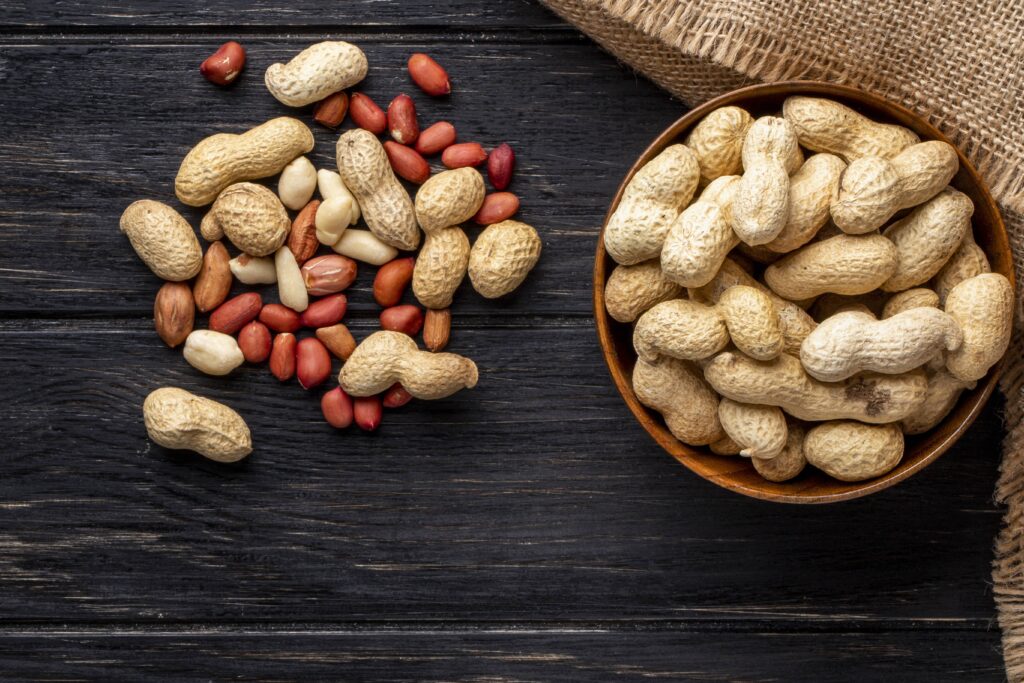
Peanuts are legumes that are commonly eaten as nuts. They grow underground in pods and are often referred to as groundnuts.
Peanuts are a good source of proteins, healthy fats, vitamins, minerals and fiber. They contain heart-healthy unsaturated fats and are low in saturated fats. Peanuts are often roasted to enhance their flavor.
Raw peanuts are used to produce peanut butter, a popular spread made by grinding roasted peanuts into a paste. Natural peanut butter only contains ground peanuts, while other varieties may contain added ingredients like sugar, oil or salt.
Peanuts are highly versatile, affordable and nutrient-dense. They make for a convenient snack or ingredient in many homemade and packaged food products around the world.
4 options are available
Sesame seeds are small, flat, and oval-shaped seeds harvested from the sesame plant. They come in various colors, with white, black, and brown being common. Sesame seeds are known for their versatile culinary uses, from bread toppings to ingredients in dishes like stir-fries and salads. They offer nutritional benefits, including healthy fats, protein, fiber, vitamins, and minerals. Ground sesame seeds are used to make tahini, a staple in Middle Eastern cuisine, and sesame seeds are often found in bakery items and snacks. Their nutty flavor and texture enhance a wide range of culinary creations.
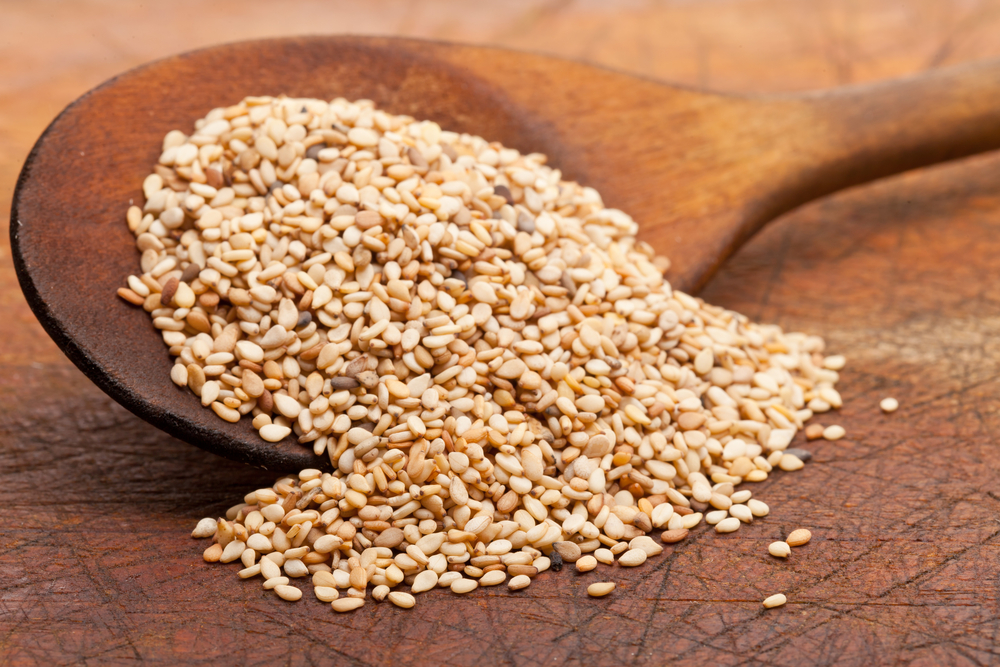

Pumpkin seeds, or Cucurbita pepo seeds, are the small, ovate, and greenish seeds derived from the inner cavity of pumpkins. These seeds, characterized by their diminutive size and green hue, encased within a white outer shell, exhibit a subtle nutty flavor profile and a notable textural crunchiness.
Pumpkin seeds, scientifically valued for their nutrient composition, are recognized for their significant protein content, balanced lipid profile with healthy fats, dietary fiber, an array of essential vitamins (including vitamin E), and an assortment of vital minerals, such as magnesium and phosphorus.
In food manufacturing, pumpkin seeds are often subjected to a roasting process and flavor seasoning, rendering them a popular and nutritious snack. Furthermore, they may be employed as salad toppings, constituents of baked goods, or essential ingredients in the formulation of granola and trail mix assortments. The combination of sensory appeal and nutritional richness underscores the adaptability and ubiquity of pumpkin seeds in food production.
Dried fruits are fruits from which the majority of the water content has been removed through various drying methods, such as air drying, sun drying, or using specialized dehydrators. This preservation process concentrates the natural sugars, flavors, and nutrients in the fruit, resulting in a sweet and shelf-stable snack or ingredient. Dried fruits are popular for their convenience, long shelf life, and versatility, and they can be enjoyed on their own or added to various dishes, including cereals, baked goods, and trail mixes.
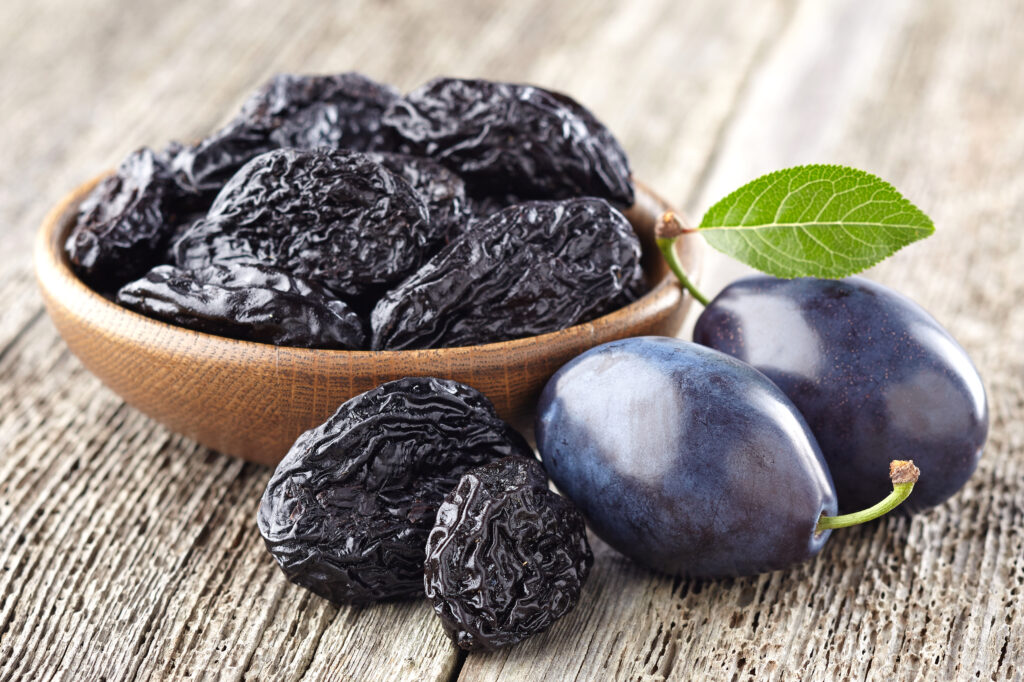
Prunes are a versatile and nutritious ingredient. Dried to a dark purple or black color, they offer a unique blend of flavors – natural sweetness with a slight tang. This makes them valuable in both sweet and savory dishes, adding depth and balance. Prunes are nutrient-dense, boasting high dietary fiber, potassium, and antioxidants, which contribute to texture and thickness in food products.
Prunes find applications in numerous ways, including as a natural sweetener in baked goods, a textural element in cereals and bars, and a flavor enhancer in sauces and stews. Their rehydration properties make them suitable for purees and fillings in pastries and sauces, enriching both the texture and taste of the end product. Prunes are a valuable addition to food production, enhancing both flavor and nutritional attributes in a variety of culinary creations. Their adaptability in various recipes ensures their continued importance in the food manufacturing industry.
© LFIngredients 2025